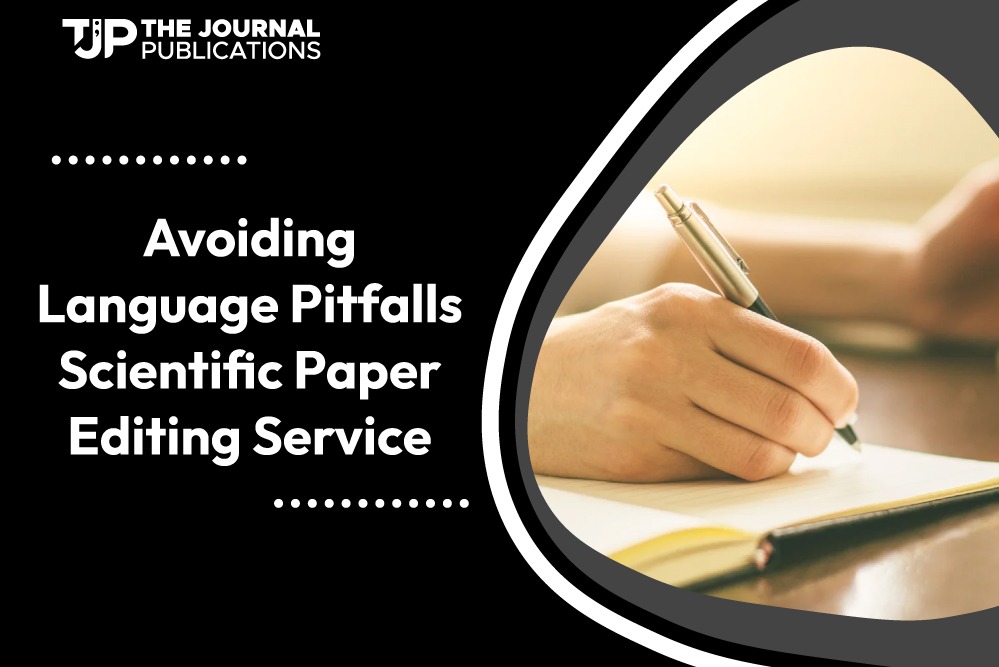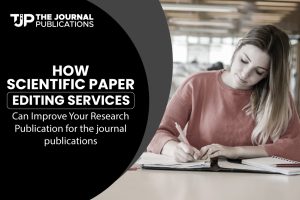Outline
- Intro
- Importance of consistency in scientific papers
- Common Inconsistencies in Scientific Writing
- The Role of an Editor in Maintaining Consistency
- Strategies for Avoiding Language Pitfalls as an Editor
- Training and Skills for Scientific Editors
- Closing Thoughts
- FAQ’s
Intro
Clarity and consistency are key in scientific research, where every word may count to make your research understandable and impactful. A professional scientific paper editing service ensures your manuscript is free of inconsistencies that may muddle your findings or confuse readers. However, achieving consistency is tough. Scientific writing often uses very complicated terminologies. Different jargon for each field and exact language is used.
These issues become multiplied with multiple authors, so publications usually suffer from misaligned terminology, inconsistent abbreviations, and varied grammatical standards—all reducing publication quality. A dedicated editing service can help identify and correct such inconsistencies while improving the overall readability and professionalism of your manuscript. Make your dissertation one you can be proud of: clear, readable, and professional—a document that relays your findings effectively to the scientific community and beyond.
Importance of consistency in scientific papers
It is not only a matter of repeating the words, but using the identical language and description in the manuscript to explain concepts clearly and uniformly.
How Consistency Improves Clarity and Comprehension
The way the same concepts are depicted is consistent and similar throughout the document. Making it easy for a reader to trace the way and construction of the overall argument. Such uniformity allows not only the text to be more readable and accessible but also aids in reinforcing some important terms that are easy to remember. Terminology consistency diverts the reader from being bothered with variation in wording to focus on the content.
Impact of Inconsistent Terms on the Communication of Research
When different terms describe the same concept, it creates confusion and diminishes the impact of the research. It badly becomes a cause of misconception about the research focus when, for example, “oxidative stress” is used as an interchange word for “oxidative damage“. Such inconsistencies can make the Scientific Paper Editing Service look unprofessional and poorly edited, reducing the chances of being accepted by prestigious journals.
Common Inconsistencies in Scientific Writing
Variations in Technical Terminology
Every scientific field uses a specialized language which sometimes creates different uses and interpretations of technical terms. Terms can also evolve, even within the same discipline, or different terms may be utilized interchangeably. The terms should also be standardized so that the readers of the paper may not be confused in understanding them because they come from different backgrounds.
Abbreviation and Acronyms Inconsistencies
Abbreviations or acronyms are convenient in scientific writing, but they can be confused if they are used inconsistently. For instance, using the World Health Organization as “WHO” in one part of the paper and as “World Health Org.” in another can break the flow of the readers and hamper their comprehension. These elements must have consistency for a good read.
Spellings and Grammatical differences between UK and US English
Differences in the spelling and grammatical peculiarities in UK and US English, as well as punctuation, especially on international collaborations and when authors gauge different linguistic standards, lead to inconsistencies. This professional editing service will help to bring these differences together and provide a cohesive and consistent manuscript that will meet global audience expectations.
The Role of an Editor in Maintaining Consistency
Identifying Inconsistencies in Terminology and Language
The main tasks of Scientific paper editor include checking the consistency in terminology and the use of language throughout a manuscript. The task requires an eagle’s eye for detail and thorough knowledge of the subject. The editors revise the entire document, verifying every section for inconsistency in terms, abbreviation, spelling, and grammar. The goal is to ensure smooth language flow from beginning to end creating a paper lucid and professional.
Standardization of Terms-Terminology-Language Use
With the identification of inconsistencies, editors standardize the terms and their usage. Selecting the most suitable term for consistent application throughout the document. They don’t work in isolation, editors make the right usage of terms and spelling from specific style guides, dictionaries, and also glossaries. This ensures high standards of clarity and precision in scientific writing, which is effective for communication.
Managing Discipline-Specific Language Variations
Editors are well-versed with the specific linguistic needs of different subjects. Every discipline possesses its technical terms and it is expected that the scientific paper editors will handle them accordingly. Understanding these refinements will assist in meeting the particular standards of various scientific communities. The manuscript is not only consistent but also customized according to the intended audience.
Strategies for Avoiding Language Pitfalls as an Editor
Preliminary Creation of a Glossary of Terms for Each Paper
Scientific glossaries help editors overcome these language inconsistencies related to terms. The glossary acts as a shared vocabulary for all editors that enables uniform wording throughout paper. Highly effective in multi-author collaboration, where different writers use varying terms for the same concepts. The glossary helps unify every language and makes the content clear but also enhances the coherence of the entire manuscript.
Cross-Indexing Terms Between Sections
An important method, I am talking about cross cross-referencing the terminology used within the whole manuscript. Keywords are rechecked in different parts of the paper, which helps in the identification of discrepancies that are missed while initial writing. This allows the information to flow smoothly and avoids confusion that may come from using different terms. Making the manuscript read professionally.
Accommodating Authors Consistency in Multi-Author Papers
It can be challenging to maintain consistency in multi-author papers, especially since they have diverse writing styles and terminologies. Scientific paper editors help have the critical role of harmonizing these differences by facilitating agreements among all contributors regarding the use of terminology before the manuscript is finalized. In building one, regular communication and collaboration amongst authors and editors are important in creating that uniformity and polish.
Training and Skills for Scientific Paper Editing Service
Essential Skills for Managing Language Consistency
Every scientific editor possesses a sharp eye for detail with good command over the language to maintain consistency effectively. They can spot and correct inconsistencies, find out the nuances within the subject matter in question, and apply relevant styles. Having familiarity with advanced editing software is important. These skills help the editor simplify the process and ensure state-of-the-art standards with accuracy and clarity.
Training Programs and Certifications Available for Editors
Scientific editors have earned specialized training programs with certification for added advantage in performing their roles. The course is from organizations like the American Medical Writers Association (AMWA) and the Board of Editors in the Life Sciences (BELS).
This provides an assurance that the editor is equipped and updated with the required competencies for the job. The certification helps develop the editor’s capability to maintain consistency in language and its accuracy. Establishing editor’s credibility, along with commanding trust from authors and peers alike.
Closing Thoughts
Maintaining consistency in language terminology forms the backbone of clarity, readability along credibility in your scientific papers. The Scientific paper editor is responsible for keeping these standards alive by revising manuscripts to meet the high demand in academic publishing research papers and presenting their findings. Striving to avoid language pitfalls, close cooperation between authors and editors is the core business, using standardized style guides with combined manual and automated tools.
Clarity and consistency are integral parts of effective scientific communication. By following the best practices and using scientific editing services, researchers can present their work in the best light and extend its impact and outreach within the scientific community.
FAQs
-
Why is it important to maintain a consistent style guide?
A consistent style guide helps uniformity in writing, with minimal confusion, and allows the readers to read a better and more professional manuscript.
-
How do editors handle discrepancies in preferred terminology by authors?
Editors can achieve a consensus from the authors by discussing and agreeing on a standard set of preferred terms that should be used within the manuscript.
-
What are the advantages of hiring professional scientific paper editing services?
Professional editing services can offer expertise in ensuring consistency, clarity, and quality within the manuscript increasing its chances of publication.





